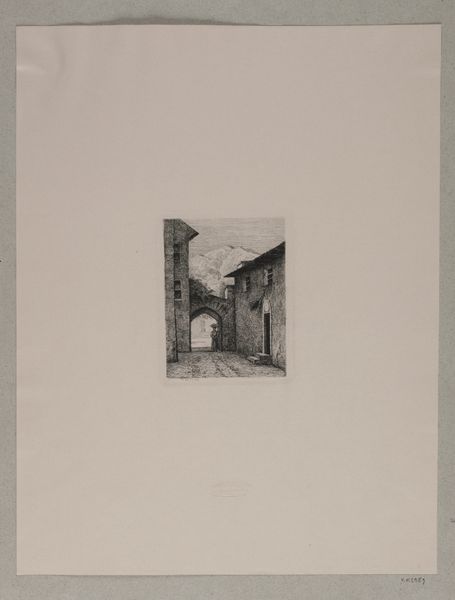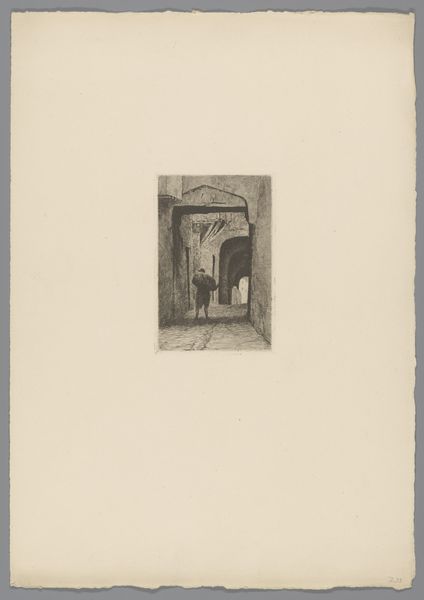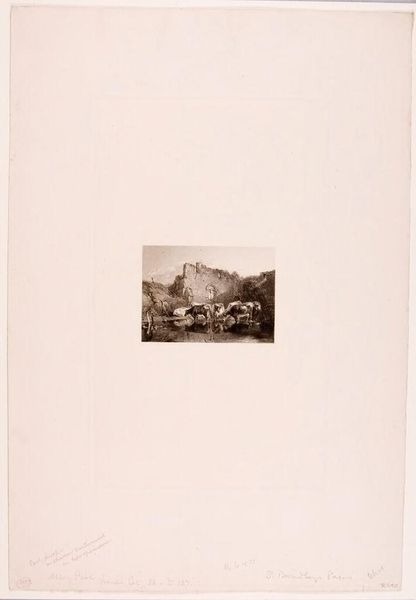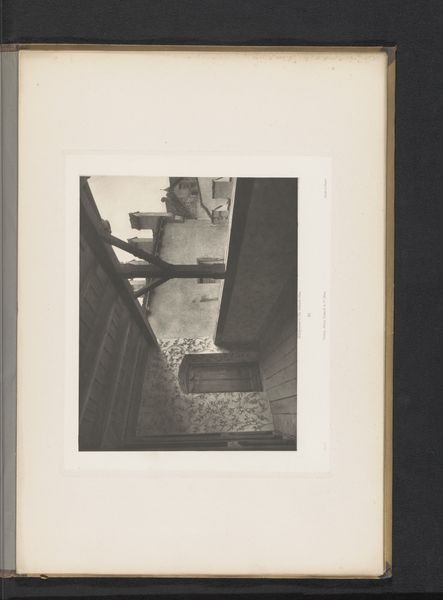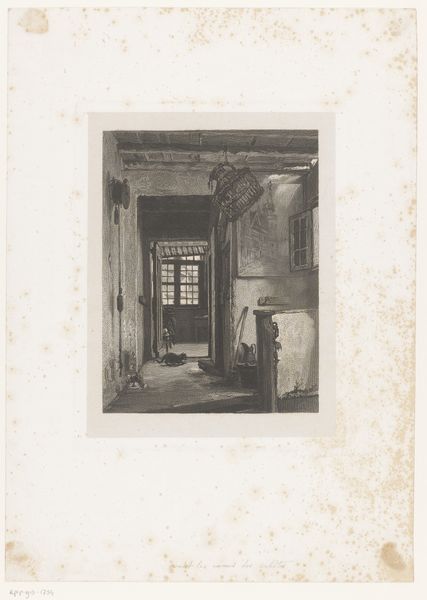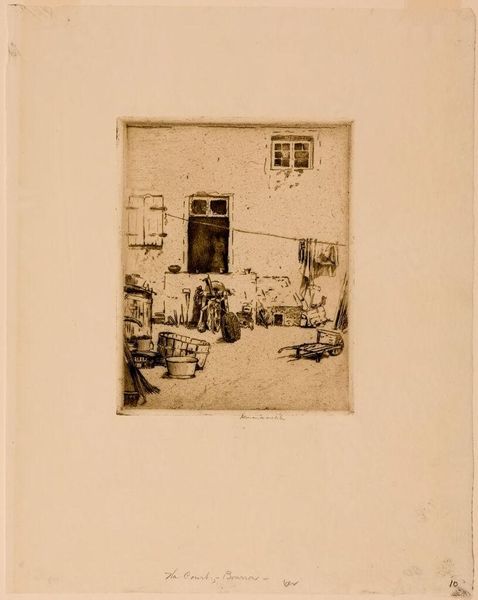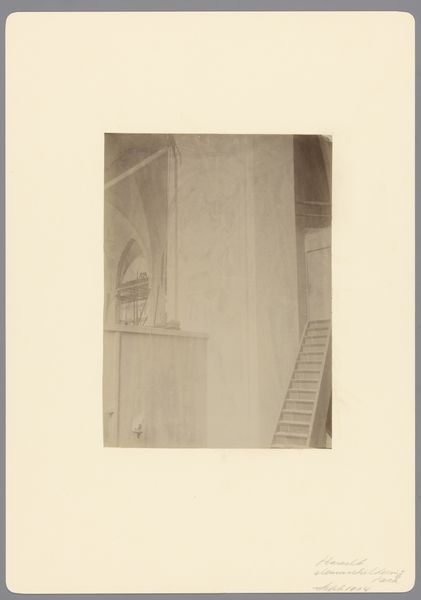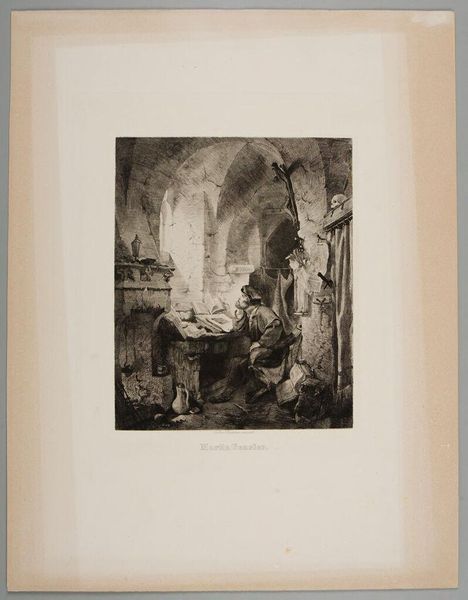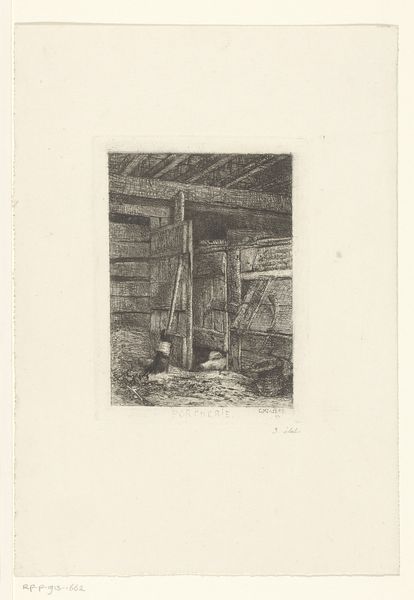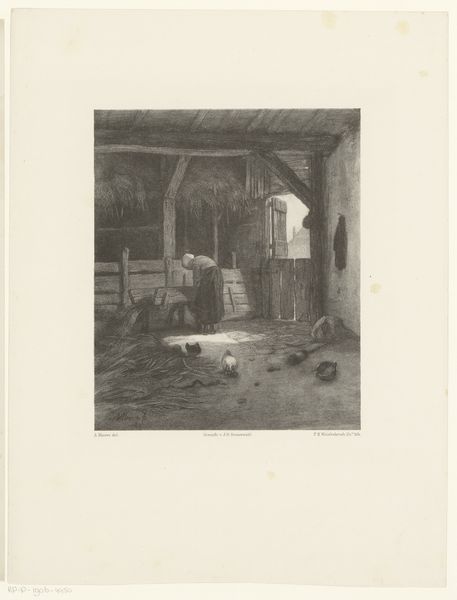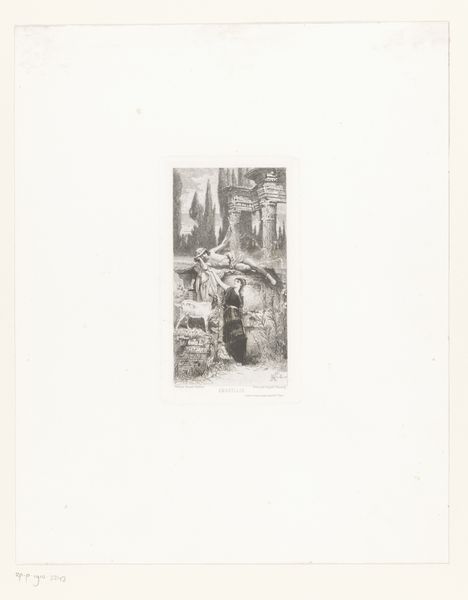
drawing, print, etching
#
drawing
# print
#
etching
#
landscape
#
northern-renaissance
#
realism
Dimensions: 220 mm (height) x 206 mm (width) (plademaal)
Editor: This etching by Viggo Jastrau, titled "Gårdinteriør," from 1913, presents an intriguing perspective. The subject appears to be a courtyard, and the rendering leans towards realism. The density of line work used to capture the scene is remarkable. What do you see in this piece? Curator: The initial consideration is how Jastrau manipulates line and shadow. Note the use of hatching and cross-hatching, deployed not just to create tonal variations but also to articulate form and texture. Observe the subtle interplay of light as it filters through the arched entryway. Where does the eye travel first, and why? Editor: My eyes are immediately drawn to the figures on the stairs, though I am not quite sure why. They are both the lightest elements in the composition, and at the vanishing point? Curator: Precisely. The positioning of the figures creates a focal point that arrests the viewer’s gaze. Further exploration shows how the artist’s use of the composition echoes that of Northern Renaissance artworks, with detailed depictions and carefully placed lines of perspective and volume. The seemingly candid realism contrasts a clear, controlled structural composition. Editor: The degree of detail seems to vary substantially. Look at the loose rendering of the ground in contrast to the tilework above! How do you consider those differing uses of hatching? Curator: Exactly! The looser marks near the chickens on the ground can be interpreted as contributing to the sensation of depth. The tighter, more precise rendering elsewhere directs more careful consideration. The contrasting surface textures serve to define different planes within the pictorial space and ultimately define Jastrau's interest in realism. Editor: So it’s a negotiation of how much information we receive in any given area that drives how the realism affects the composition, interesting! Thank you. Curator: Indeed. Paying close attention to composition reveals how line work is used strategically, to manage visual pathways and convey relative importance and create a compelling image overall. Thank you.
Comments
No comments
Be the first to comment and join the conversation on the ultimate creative platform.
